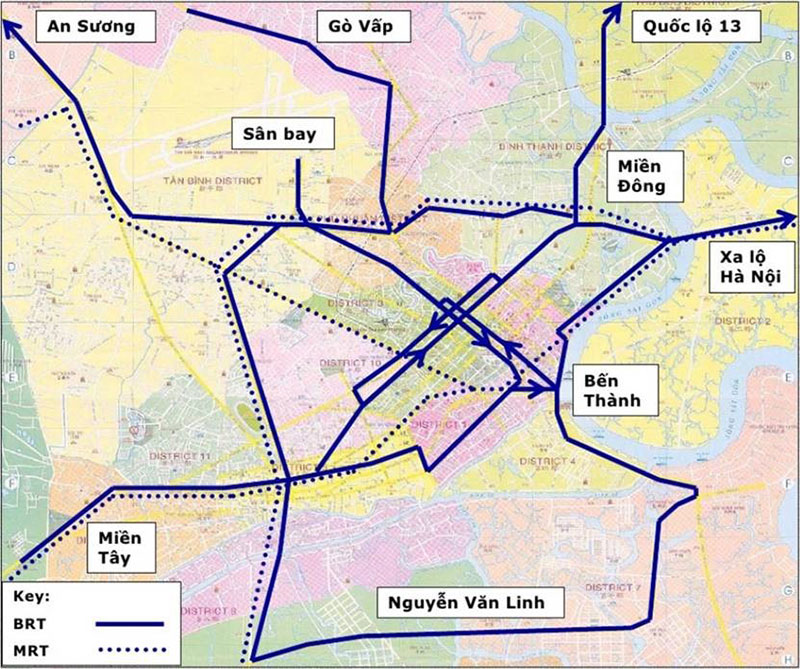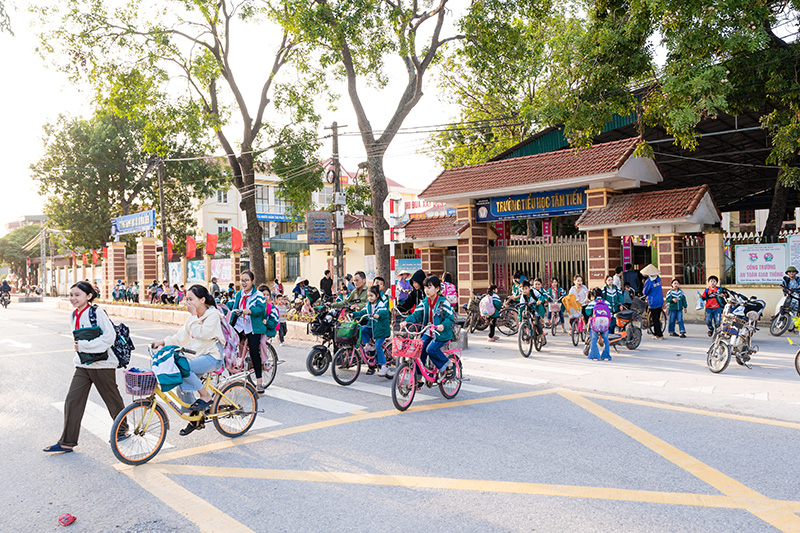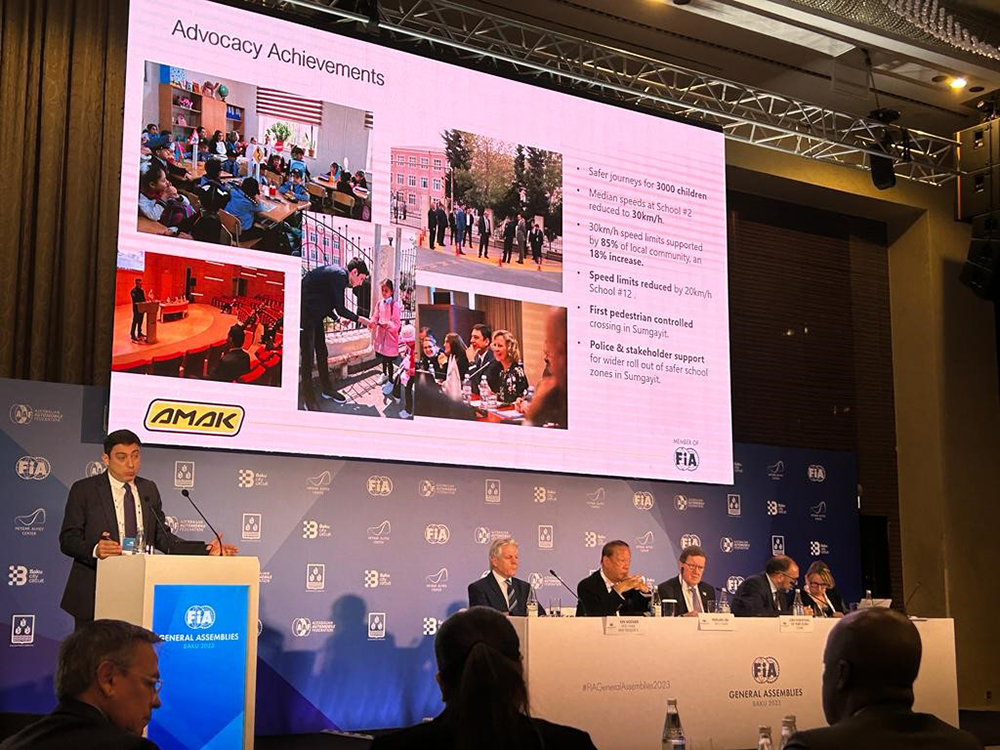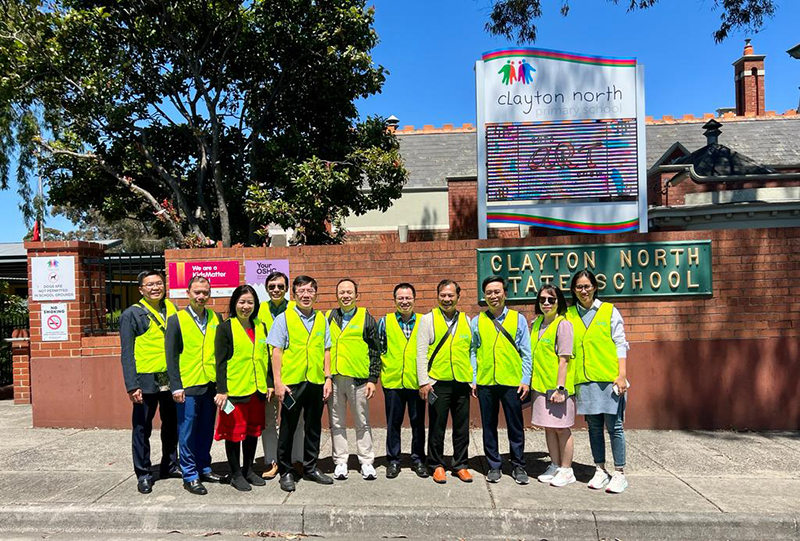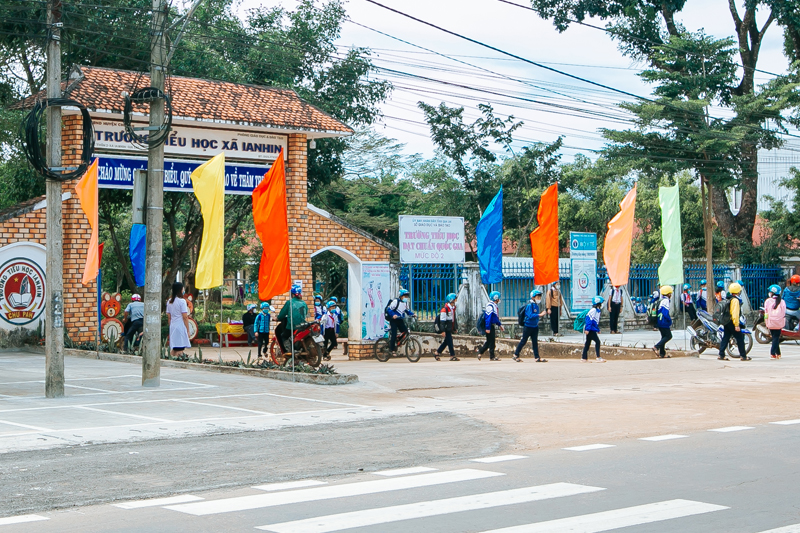Ho Chi Minh City adopts pedestrian school safety plan
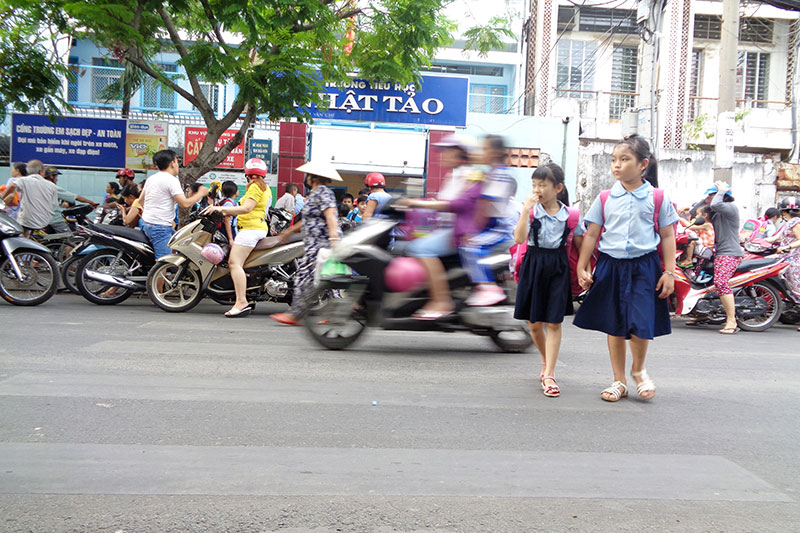
Ho Chi Minh City’s new pedestrian safety plan has adopted the safe school zone interventions advocated by Child Health Initiative partners AIP Foundation, World Resources Institute and the International Road Assessment Programme.
The new pedestrian safety plan in District 6 of the Vietnamese city will provide new safety measures for primary and secondary schools along the new Bus Rapid Transport (BRT) corridor and feeder roads. The plan will ensure zebra crossings and sidewalks are constructed on every road around schools in the BRT zone and will also repair potholes, tile pavement networks, and provide signposting in further measures to protect pedestrians.
Ho Chi Minh City is constructing its first BRT system as a part of the HCMC Green Transport Project, financed by the World Bank. AIPF, along with other road safety organisations, identified that while the BRT corridor will expand public transport options, it is also likely to bring new risks for pedestrians, especially children. To better understand the current and potential future road safety challenges, AIPF conducted a comprehensive baseline study of 37 primary and secondary school zones located along the BRT corridors in Districts 1, 5, and 6, to identify challenges to pedestrians. The research used surveys to identify road safety knowledge and behaviour, as well as conducting in-depth interviews, and pedestrian behaviour video observation.
The school zone assessments identified a range of challenges, including the absence of pedestrian warning lights, traffic lights, or traffic calming measures. More than half of all parents surveyed reported safety as the main reason their children were not allowed to walk to school alone (51%). All parents surveyed believed that there should be more information and understanding of pedestrian safety and stronger enforcement of traffic laws. Improvements to sidewalks were considered necessary by over 94% of parents and the installation of traffic lights and road signs reduce vehicle speed around school entrances were favoured by 97% of respondents.
AIPF made a series of recommendations based on its research, presented to Ho Chi Minh City’s Traffic Safety Committee (TSC) and Department of Transport (DoT). These suggested elements included a series of road design measures to improve safety for child pedestrians and recommendations for communication materials to improve road safety knowledge and behaviour. These recommendations were adopted People’s Committee of District 6 in Ho Chi Minh City, the executive body that makes decisions related to education, public safety, and infrastructure, in the region of the city, and are now reflected in the District’s new pedestrian safety plan.
Commenting on the announcement of the plan, Mirjam Sidik, the CEO of AIP Foundation said: “The Ho Chi Minh City government’s commitment to safe school zones in District 6 is a success, but more remains to be done to ensure road modifications at all schools along the BRT corridor. In May, AIP Foundation will be participating in a workshop with the World Bank, International Road Assessment Programme (iRAP), and World Resources Institute to coordinate plans for advocating the Ho Chi Minh City government to implement road modifications at the rest of the affected schools in Districts 1 and 5.”
The organisations are working in Ho Chi Minh City as part of the Bloomberg Global Road Safety Initiative. AIP Foundation and iRAP also receive core funding support from the FIA Foundation. The FIA Foundation has continuously supported AIP Foundation since 2008 with strategic funding and technical support that has given AIP Foundation the flexibility to pursue opportunities to advance both organizations’ shared mission of improving the health and safety of children by addressing the global crisis of road crashes. For the period 2017-2020, the FIA Foundation’s core funding support allows AIP Foundation to adopt a holistic approach aiming to reduce injury and fatality on the roads with programs focusing on Vietnam, Cambodia, Myanmar, China, and Thailand.
